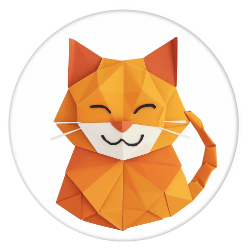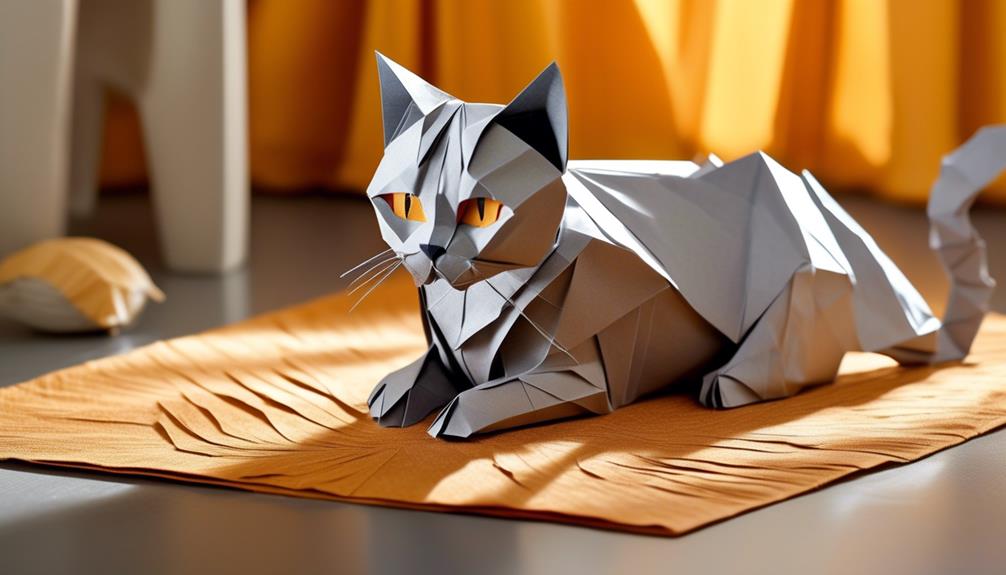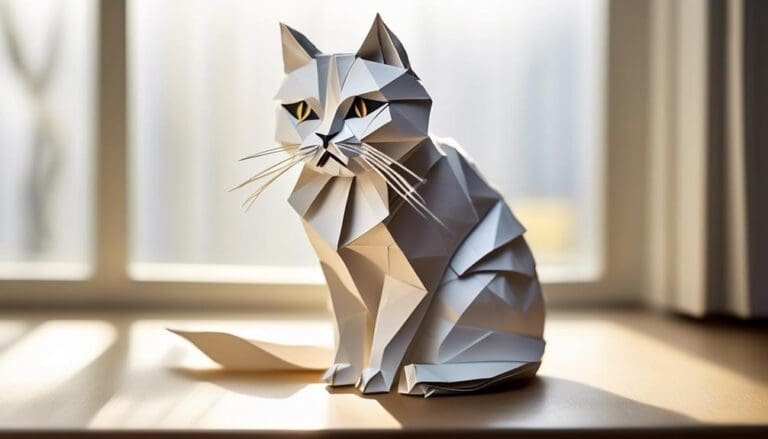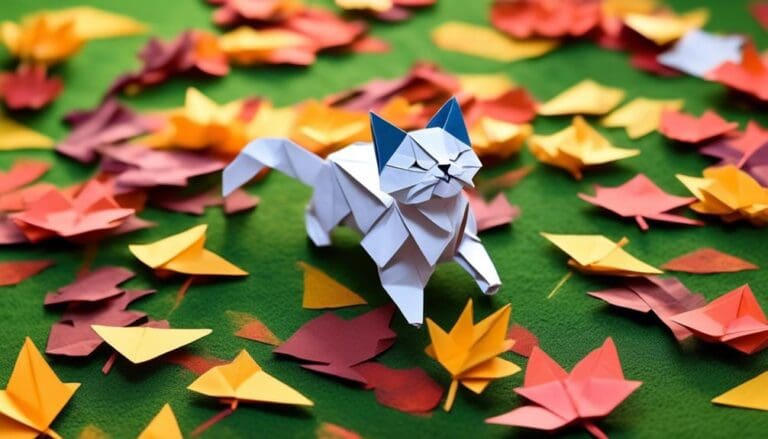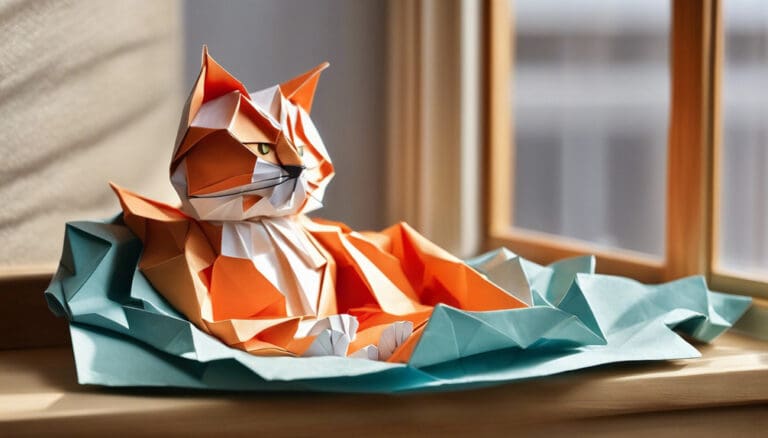Have you noticed any slight changes in your older cat’s behavior? It’s important to realize that as cats age, their needs change. Keeping a routine that involves soft, stimulating play is just as important as their diet and visits to the vet.
Stimulating their mind and exercising their aging muscles are more than just simple acts of care; they’re essential to your cat’s well-being. While kittens may instinctively engage in playful antics, older cats often require your gentle encouragement to stay active.
Consider how a thoughtfully designed play session can improve your aging cat’s health and happiness. We will discuss how to adjust play activities to meet their evolving needs, helping them remain healthy and joyful as they age.
Key Takeaways
- Aging cats may show less enthusiasm for play, but it is still important to engage them in play activities.
- Play is essential for maintaining the health and happiness of senior cats.
- Adapt play sessions to the cat’s health needs by choosing frequent, short, and less intense activities.
- Engaging in play with senior cats allows owners to monitor their agility, mobility, and overall vitality, providing an opportunity to detect and address any potential health concerns.
Recognizing Senior Cat Behavior
Observing your aging cat, you might notice they’re not as spry as they used to be, often signaling the onset of their golden years. This transition into the twilight of their lives brings with it certain age-related physical changes. Senior cats may show less enthusiasm for play, their leaps and sprints replaced by a preference for napping in a sunbeam or seeking the comfort of your lap.
You may see a decrease in their activity levels or even a loss of appetite. It’s not uncommon for these changes to stem from underlying health issues, so it’s important to consult a vet. They can help determine whether your cat’s quieter demeanor is a natural part of aging or something that requires medical attention.
The Importance of Play
While your senior cat may no longer chase after every toy with kitten-like abandon, engaging them in regular play is important for maintaining their health and happiness. Play is important, as it keeps your beloved cat both physically and mentally stimulated. It’s about ensuring their golden years are filled with joy and comfort, as much as it’s about health.
Here’s why it’s essential for your senior cat to play:
Health Benefits:
- Exercises muscles and joints, promoting mobility and reducing the risk of weight gain.
- Prevents health issues by combating boredom and stress, which can lead to behavioral problems.
Considerations:
- Tailor play sessions to your cat’s specific health needs; consult your vet to create a suitable play routine.
- Opt for less intense, shorter sessions at frequent intervals to suit their energy levels.
Adapting Playtime Activities
To ensure your aging cat’s playtime is both safe and enjoyable, it’s important to tailor activities to their unique health considerations and physical capabilities. Your senior cat mightn’t pounce as eagerly as they once did, but with your thoughtful adjustments, they can still experience the joys of playtime.
Consult with your veterinarian to establish a play schedule that aligns with your cat’s health. They can offer personalized advice, ensuring that play sessions contribute positively to your cat’s well-being. Remember, less intense and shorter play sessions, spread throughout the day, can prevent fatigue and keep your senior cat engaged without overwhelming them.
Try different toys to see what your cat likes. Choose toys that are fun but not too hard, so your cat stays interested without getting upset. Watch how your cat plays to learn what they enjoy most.
Ultimately, your goal is to enrich your senior cat’s life with moments of play that respect their pace and preferences. By doing so, you’re not just entertaining them; you’re nurturing their spirit and strengthening the bond you share.
Low-Impact Games for Seniors
Building on the adaptations you’ve made for your senior cat’s playtime, consider introducing low-impact games that gently exercise their muscles and stimulate their minds without causing strain. It’s key to serve your aging cat with activities that show your understanding of their changing needs.
Choose toys and games that:
- Encourage gentle pawing and stretching, such as soft balls or interactive cat puzzles.
- Include catnip to pique their interest and add an element of delight to their play.
Remember, the goal is to nurture their well-being through play that respects their age. Avoid vigorous games that could harm their delicate joints, and instead, focus on these low-impact options:
Engage in play that:
- Utilizes laser pointers for them to follow at a comfortable pace, allowing them to stay mostly stationary while their eyes and head move.
- Includes treat-dispensing toys that reward their efforts and keep their minds sharp as they figure out how to release the treats.
Interactive Toys for Stimulation
Engage your senior cat’s natural hunting instincts with interactive toys designed to mimic the scurry of prey or the flutter of birds, providing mental stimulation and gentle physical activity. These toys serve as a delightful invitation for your beloved cat to awaken their playful spirit in a safe and comforting manner.
Rolling toys can be particularly captivating, as they invite a chase that taps into your cat’s innate desire to hunt. Watch their eyes light up with curiosity and excitement as they track the movements across the floor. It’s a beautiful way to bring joy into their daily routine.
Don’t forget the allure of catnip toys. The scent can be irresistible to felines, drawing them into a playful dance of pounce and toss. It’s heartwarming to see your senior cat engaged and enlivened by such simple pleasures.
Wand toys that mimic birds stimulate your cat both mentally and physically. Rotating these toys keeps playtime interesting, demonstrating your care for your cat’s happiness and health.
Encouraging Movement Gently
As your cat enters their golden years, it’s important to keep them moving at a pace that’s comfortable for them. Gentle play can support healthy joints and keep their mind sharp, so start with simple activities that won’t overtax their aging body.
Watch for fatigue signs and remember that small movements contribute to well-being.
Promoting Healthy Joints
To maintain your aging cat’s joint health, initiate playtime with activities that encourage gentle stretching and light movement. As you help keep your senior cat active, focus on:
Engage in gentle play
- Use toys that glide smoothly on the floor
- Offer soft balls that can be nudged without much effort
Incorporate slow and controlled movements
- Encourage your cat to follow a laser light or feather wand with slow, deliberate motions
- Create a trail of treats that leads to mild stretching positions
Always remember to avoid high-impact activities that may harm their delicate joints.
And, if you ever feel uncertain, consult a veterinarian for tailored advice on promoting your senior cat’s joint health through play. Your tender care will support their well-being and mobility.
Stimulating Mental Alertness
Encouraging your senior cat to partake in gentle play can sharpen their mind and enhance their mental alertness. As a devoted caretaker, keeping cats engaged through light, playful activities isn’t just about physical health—it’s about nurturing their cognitive well-being, too.
Interactive toys or simple games that prompt gentle movement awaken the senses and help maintain their mental acuity. This tender approach to play supports their aging brains, keeping them active and alert. It’s a loving gesture that can enrich the golden years of your cat, ensuring they remain curious and interested in the world around them.
Mental Exercise Benefits
Engaging your senior cat in playful activities offers more than just physical exercise; it’s a vital practice to keep their minds sharp and spirits lifted. The mental exercise benefits for older cats are profound and integral to their overall well-being.
Consider how your cat purrs softly and looks at you happily when you play with them, especially as they get older. Playing is not only good for their physical health but also stimulates their mind as they explore different toys and games you give them.
Mental stimulation through play:
- Helps keep senior cats mentally active and engaged
- Can prevent cognitive decline, ensuring their twilight years are as bright as possible
Interactive play:
- Offers opportunities for problem-solving and decision-making, sharpening their cognitive skills
- Reduces stress and anxiety, promoting a tranquil mind
These activities nurture not just their mental faculties but also your bond. As you tailor playtime to their pace and preference, you’re not only serving their needs but also reinforcing a mutual emotional enrichment.
Play and Health Monitoring
While you’re nurturing your senior cat’s mind with playful activities, you’re also quietly keeping a loving eye on their physical health and subtle changes in behavior that may need attention. As you entice them with cat toys, their leaps and pounces allow you to monitor their agility and mobility closely. You’ll notice if there’s a dip in their usual dexterity or an unusual hesitation that could signal discomfort or a health concern.
Observing your older cat playing with their toys allows you to monitor their cardiovascular health by noting changes in their breathing and heart rate. If they pant quickly after light activity or tire easily, it’s advisable to discuss these signs with your veterinarian.
Playtime isn’t just about fun; it’s a window into your senior cat’s vitality. Their eagerness to swat at a dangling feather or chase a rolling ball reflects their energy levels. Should you detect any changes, like a lack of enthusiasm that’s out of character, it’s an opportunity to provide the care they need.
Bonding Through Playtime
As you gently engage in play with your aging cat, you’re doing more than just keeping them active; you’re nurturing a deep, loving connection. Each toy-induced pounce and careful stalk can enrich your cat’s emotions, bringing a spark back into their eyes.
Strengthening Pet-Owner Connection
Bonding with your senior cat through playful interactions not only enhances their physical health but also deepens the cherished connection you share. When you engage in playing games together, you’re doing more than just keeping them active. You’re nurturing a bond that’s built on trust and affection.
Motivate your older cat to participate in activities.
- Gentle games that respect their physical limits
- Mental challenges to keep their mind sharp
Incorporating play into your daily routine is a tender way to show love and care. It’s about understanding and catering to their unique needs while creating moments that are both joyful and comforting. This strengthens the heartwarming bond that makes every shared second precious.
Play: Emotional Enrichment Method
Playing with your older cat is more than just fun; it helps improve their mood and makes your relationship stronger. As an emotional enrichment method, playtime ensures your cat doesn’t risk getting bored, which is important for their well-being in their golden years.
Here’s a simple table to inspire you:
| Activity Type | Benefit | Emotional Enrichment |
|---|---|---|
| Gentle Tossing | Stimulates Mind | Joy in the Chase |
| Puzzle Feeders | Encourages Thinking | Satisfaction in Solving |
| Soft Toys | Physical Interaction | Comfort in Cuddles |
Show your love through gentle play with your cat, as this strengthens your bond. Caring actions during playtime help your cat thrive emotionally.
Scheduling Regular Play Sessions
To ensure your senior cat stays agile and happy, establish a consistent play schedule tailored to their changing needs. Regular play sessions can help maintain your senior cat’s physical health by preventing obesity and joint issues, both of which are essential for their overall well-being.
It’s important to know that as cats age, their energy levels and physical capabilities can decrease, but their need for stimulation and love remains. Here’s how to create a nurturing playtime routine:
Consult with a veterinarian
- Assess your cat’s health
- Get advice on safe play activities
Adapt play sessions
- Less intense activities
- Shorter, more frequent sessions
Frequently Asked Questions
Do Older Cats Need to Play?
Absolutely, you’ll want to keep your older cat playful. It’s vital for their health—maintaining muscles, joints, and mental sharpness. Just tailor activities to their pace and comfort for a happy, healthier pet.
Why Is It Important to Play With Your Cat?
Playing with your cat breathes joy into their golden years, keeping their body nimble and their spirit sprightly. It’s a tender act of love that nurtures their well-being and fortifies your bond.
How Do You Engage a Senior Cat in Play?
You’ll want to gently encourage your senior cat’s play by offering toys that mimic prey, using catnip, and scheduling interactive playtimes during their peak activity hours for their health and happiness.
Do Cats Lose Interest in Playing as They Get Older?
You’ve noticed your older cat isn’t as playful, which is common. Their interest may wane with age, but gentle encouragement and finding suitable games can reignite their playful spirit. Keep nurturing their joy.
